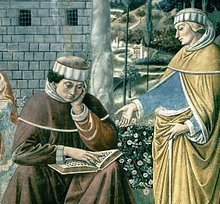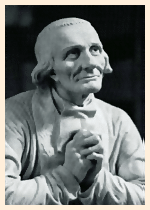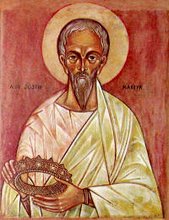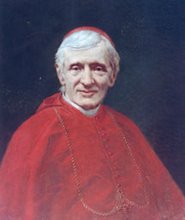 Bishop O'Donoghue is setting the stage to clear Pelagianism out of Lancaster Diocese. His "Fit for Mission: Schools" report has just been published and, although its style is not that of the Holy Office it does say that the congregation should kneel for the Eucharistic Prayer and that the Theology of the Body must guide teaching about the person in Catholic schools.
Bishop O'Donoghue is setting the stage to clear Pelagianism out of Lancaster Diocese. His "Fit for Mission: Schools" report has just been published and, although its style is not that of the Holy Office it does say that the congregation should kneel for the Eucharistic Prayer and that the Theology of the Body must guide teaching about the person in Catholic schools.However, what makes this report so important is its main concern: "Is Jesus Christ the true centre of our schools and colleges?"
He distinguishes between the focus of Ofstead for schools and the focus of the Church - its Catholic ethos. Today we must create this ethos anew, since there is a crisis of values, relativism is a dogma, the secular vision sees education only in terms of career and bases happiness firmly in consumerism.
That the basis of the Catholic ethos is located in the dignity of the person and in the Sermon on the Mount, and that such an ethos comes about only through the living presence of Jesus and in embracing gthat presence.
He names other factors which affect the Catholic ethos: the parctice or non-practice of the staff, and even if they are practicing, are teachers modelling themselves on Christ? Do Heads, Senior Management and Governors know what the identity and mission of a Catholic School is? Are the parents embracing their own primary role under God? Is the Gospel proclaimed in schools?
There is an interesting comparison with Cardinal Pell's goals for Sydney's Catholic Schools: proclaim a Christ-centered life, embrace the full teaching of the Church, formation for Mission. Very sucinct!
We have been labouring under Pelagianism for far too long; let's support Bishop O'Donoghue with our prayers as he now begins the renewal of his schools. (You can find the report on "What's new" on the Diocese of Lancaster website.)














8 comments:
I read this in one of the Catholic newspaper and I thought this was a very good thing (obviously). But on the second thought I wasn't so sure. This is my humble opinion.
I think the FIRST QUESTION that needs to be asked is whether the 'vehicle' isn't beyond repair. If it is then it doesn't make any sense repairing it.
Based on what I saw, read and heard (I've never actually studied in a Catholic school) I came to the conclusion that I'm very pessimistic about whether there really is a point in keeping these schools. Pelagianism, indifferentism, modernism and whatever else seems to be deeply embedded into the system and greatly damaging to the kinds who are just learning about the world, God and facing the greatly secular societey. It seems that pupils are more likely to loose their faith in Catholic school than in secular school. The money used to fund Catholic school can always be used somewhere where it's more useful (evangelization, etc.)
Of course this depends on how on how one answers the first question...and I'm not sure how to answer it.
T
Tomas, we are all "beyond repair". The Good News is, God doesn`t think so. The repair of our schools starts with us all individually, and I believe that as little sparks spring into life, they can spread. Hope is what we have - Spe Salvi is all about that. Lots of people have given up on the schools. Maybe different people, willing to make sacrifices, are taking their places because they`ve been given fresh hope. This is SO linked to Spe Salvi the more I think about it - the collected V2 docs. in relation to teaching have produced a lot of the current mess. Look at what B16 is re-affirming in SS: Jesus as THE saviour (not just another interesting option among deities.), Mary's place as Mother, moral absolutes (cue Theology of The Body YES!! it should be a mandatory part of the syllabus). It`s so simple, even within the constraints of a national curriculum - it can be done.
I do hope Joseph Ratzinger lives to be 100. And the Lancaster Bishop.
bernadette.
Many of the 'vehicles' look as though they are beyond repair - but, I think that that will only become really apparent in the context of genuine renewal. In other words, when genuine renewal begins to happen it will become clear who is taking part in it and who is not, and therefore what remedies need to be applied. And actually, since in this case it is the Bishop who is initiating and engaging in the renewal - the one who has the very mission to do this - we can hope that the process which he is beginning will, in due course, deal with the real state of affairs which your questions point to. We should support him with our prayers.
Hey, I think You both might be correct. This is indeed a good opportunity to see where things really are. After all, you will often see whether a vehicle is beyond repair only after you start repairing it.
I also like the comment about hope.
It is indeed great to see a bishop looking into these issues. I do think it's a great sign of a better future. There always has to be someone who comes first...and perhaps You are right that some institutions only need good direction to come back to where they should be heading.
So, lets HOPE and pray! :-)
.... and, we do not ever have to lose hope that God is control, because He promised that He would build his church and that the gates of hell would never prevail against it. It`s a great safeguard against the pride that sometimes falsely leads us into thinking it is WE who hold the keys. We do not. We do, however, have to respond to His call to co-operate. That IS quite hard. Become a Catholic RE teacher, Tomas !!! I dare you.
bernadette
Thank God the Bishop of Lancaster has had the courage to publish such a document. it is a start and he is to be praised for publishing such a docuent in the current climate. God bless him.
May the Good Lord leave Pope Benedict with us for at least 2 years!
2 years ??!! are you Catholic ?
Did you accidentally miss off the "0" after the "2" ? We are talking a 30 yr reform at least.
Post a Comment